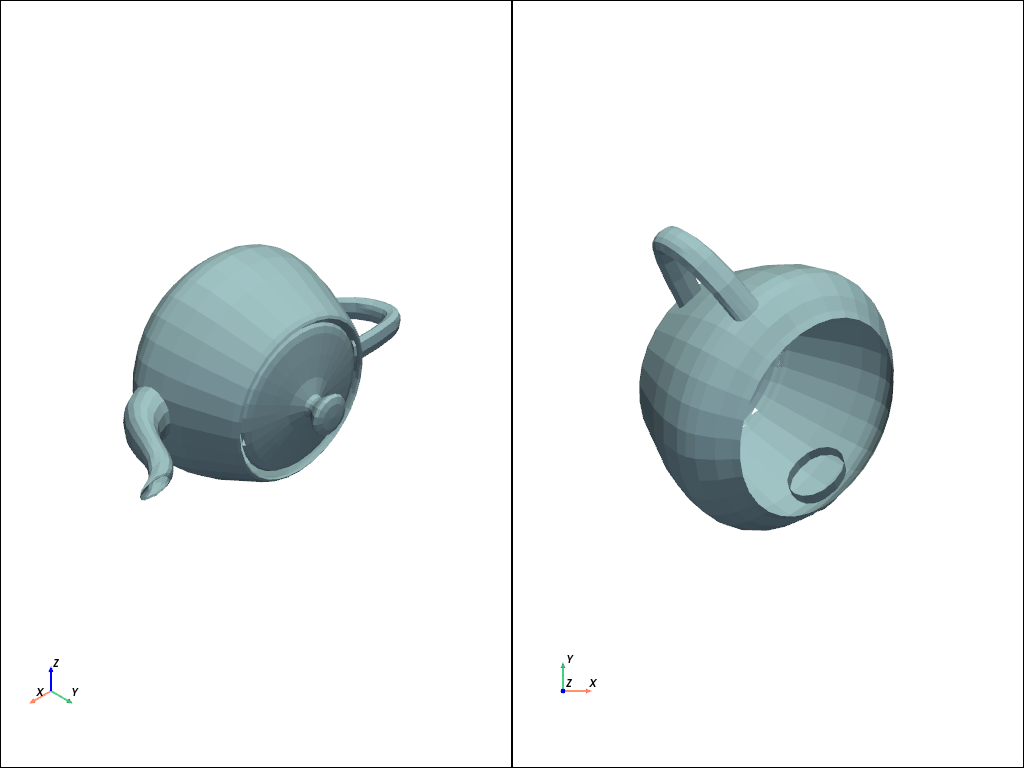pyvista.DataSet.flip_normal#
- DataSet.flip_normal(
- normal: VectorLike[float],
- point: VectorLike[float] | None = None,
- transform_all_input_vectors: bool = False,
- inplace: bool = False,
Flip mesh about the normal.
Note
See also the notes at
transform()which is used by this filter under the hood.- Parameters:
- normal
VectorLike[float] Normal vector to flip about.
- point
VectorLike[float],optional Point to rotate about. Defaults to center of mesh at
center.- transform_all_input_vectorsbool, default:
False When
True, all input vectors are transformed. Otherwise, only the points, normals and active vectors are transformed.- inplacebool, default:
False Updates mesh in-place.
- normal
- Returns:
pyvista.DataSetDataset flipped about its normal.
See also
pyvista.Transform.reflectConcatenate a reflection matrix with a transformation.
Examples
>>> import pyvista as pv >>> from pyvista import examples >>> pl = pv.Plotter(shape=(1, 2)) >>> pl.subplot(0, 0) >>> pl.show_axes() >>> mesh1 = examples.download_teapot() >>> _ = pl.add_mesh(mesh1) >>> pl.subplot(0, 1) >>> pl.show_axes() >>> mesh2 = mesh1.flip_normal([1.0, 1.0, 1.0], inplace=False) >>> _ = pl.add_mesh(mesh2) >>> pl.show(cpos="xy")

